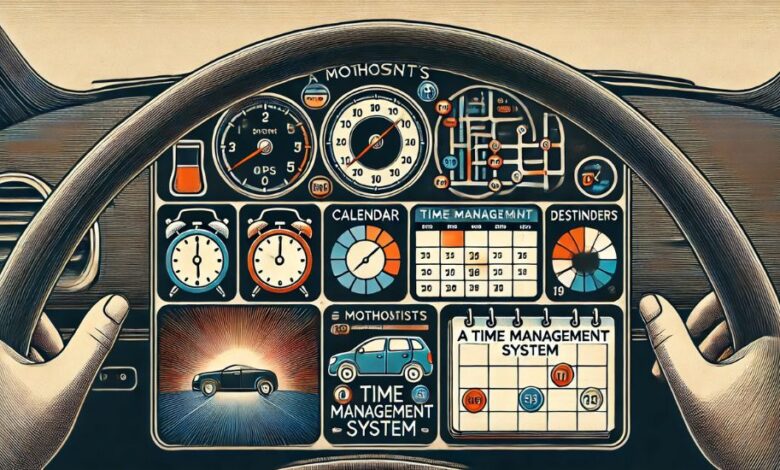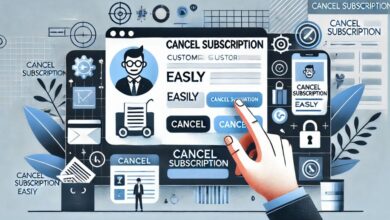Enhancing Efficiency with a motorists time management system

In today’s fast-paced world, managing time effectively is crucial for everyone, including motorists. When you’re frequently on the road, maximizing every minute becomes essential. A well-designed a motorists time management system can help organize trips, prevent delays, and ensure punctuality. This article explores how a motorist’s time management system benefits drivers, offering tips to optimize every journey efficiently. Whether you’re a commuter, a long-haul driver, or a delivery specialist, adopting a structured approach to time management can make your travels smoother and more effective. Here, USA Magzines brings you a comprehensive guide on implementing a motorist’s time management system to enhance your driving experience.
Understanding a Motorist’s Time Management System
A motorist’s time management system is a structured approach to scheduling, planning, and executing trips. It involves setting realistic timelines for each journey, prioritizing stops, and planning routes to avoid unnecessary delays. Key elements include route optimization, contingency planning, and effective use of navigation tools. For those who frequently face traffic and unpredictable travel conditions, adopting a time management system can reduce stress, improve punctuality, and make travel experiences more enjoyable. At USA Magzines, we recognize that efficient time management is a game-changer for drivers.
Why a Motorist’s Time Management System is Essential
The benefits of implementing a motorist’s time management system extend beyond just getting from point A to B. With a structured plan, drivers can achieve:
- Reduced Travel Time: Optimized routes minimize time wasted on congested roads.
- Better Fuel Efficiency: By avoiding delays and unnecessary idling, fuel consumption is minimized.
- Enhanced Safety: Reduced stress and fewer rush-induced errors lead to safer driving.
- Improved Work-Life Balance: Drivers can allocate time for rest and relaxation, maintaining a healthier lifestyle.
USA Magzines highlights these benefits as essential factors in improving a motorist’s overall journey experience.
Key Components of a Motorist’s Time Management System
Each motorist’s time management system may vary based on individual needs, but common components include:
1. Route Planning and Optimization
Planning routes in advance can save valuable time and energy. Using apps or GPS systems that provide real-time traffic updates, drivers can select the most efficient routes. Some navigation tools even offer alternative routes when congestion is detected, allowing flexibility and faster travel. USA Magzines suggests prioritizing reliable navigation apps for effective route planning.
2. Scheduling Rest and Refuel Stops
A crucial part of a motorist’s time management system is scheduling breaks. Resting allows drivers to stay alert, and planned refuel stops prevent unexpected delays due to low fuel. By incorporating scheduled breaks into their journey, drivers can avoid fatigue, which is critical for safe driving and efficiency.
3. Setting Clear Travel Goals
Setting realistic travel goals—such as estimated arrival times, designated breaks, and key tasks along the way—helps maintain focus. Defining travel objectives makes it easier to stick to schedules, whether it’s arriving at work on time or completing deliveries efficiently.
4. Using Checklists for Essential Preparations
Preparing a checklist for each journey ensures nothing essential is forgotten, especially for long trips. This checklist may include fuel levels, tire pressure, emergency kits, and snacks. A pre-trip checklist streamlines preparation, enhancing a motorist’s time management system by ensuring the driver is ready for the road.
Tips for Implementing a Motorist’s Time Management System
Building a motorist’s time management system can be a simple yet transformative experience. Here are tips for effective implementation:
1. Set Departure and Arrival Time Windows
Defining time windows for departure and arrival is essential. These windows allow some flexibility, accommodating unforeseen events like minor traffic delays. Rather than stressing about an exact time, a flexible window makes it easier to stay on schedule.
2. Prioritize Urgent and Essential Stops
Every journey may include planned stops, but prioritizing essential ones (such as fuel or restroom breaks) is key. Knowing which stops are non-negotiable and which can be skipped if running behind saves valuable time.
3. Monitor and Adjust the Schedule Real-Time
Traffic conditions and weather changes can disrupt even the best-laid plans. Monitoring real-time conditions and adjusting schedules on the go keeps the journey smooth. Navigation apps that update routes in real-time are valuable for this purpose.
4. Minimize Multitasking While Driving
A motorist’s time management system isn’t just about planning but also safe execution. Avoid multitasking on the road, which distracts from safe driving. If any task needs to be completed—like checking directions or making a call—find a safe place to stop first.
Tools to Enhance a Motorist’s Time Management System
Various tools can support a motorist’s time management system. From advanced GPS devices to mobile apps, technology has provided drivers with ways to streamline their journeys. Some useful tools include:
1. Navigation Apps with Traffic Alerts
GPS apps such as Google Maps and Waze offer real-time traffic updates, alternative routes, and estimated arrival times. These tools help optimize routes and avoid delays, making them indispensable for a motorist’s time management system.
2. Fuel Monitoring Apps
Apps like GasBuddy assist drivers in finding fuel stations with the best prices along their route. This saves not only time but also money by ensuring the best fuel options are available without veering off course.
3. Task Management Apps for Scheduling
Applications like Trello or Google Calendar can be used to set travel goals and schedule reminders. By incorporating these task management apps into a motorist’s time management system, drivers can stay organized and adhere to their travel schedules more effectively.
Addressing Common Challenges in a Motorist’s Time Management System
Implementing a motorist’s time management system may face challenges, such as traffic, weather conditions, or unexpected detours. To overcome these obstacles:
- Stay Informed: Keep updated on weather conditions and road closures.
- Prepare for Emergencies: Always carry an emergency kit, water, and snacks.
- Allow Extra Time for Urgent Trips: For critical journeys, plan a buffer time to absorb delays.
USA Magzines believes that by preparing for these challenges, drivers can achieve a smoother and more predictable travel experience.
Conclusion
A motorist’s time management system can significantly impact driving efficiency, safety, and overall travel satisfaction. Whether you’re navigating a daily commute or tackling a cross-country trip, having a structured plan saves time, reduces stress, and leads to more enjoyable journeys. Incorporating tools like navigation and scheduling apps, setting clear travel goals, and optimizing routes are all part of an effective time management system.
USA Magzines encourages drivers to explore and personalize their time management systems to fit their travel needs, making every journey purposeful and efficient. With careful planning, motorists can take control of their time and enhance their driving experiences, no matter the distance or conditions.



